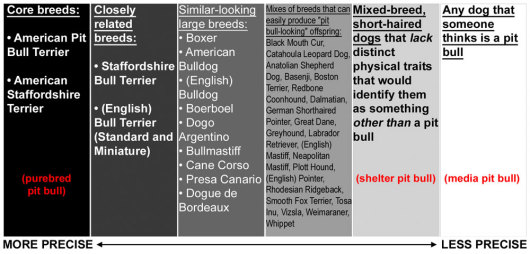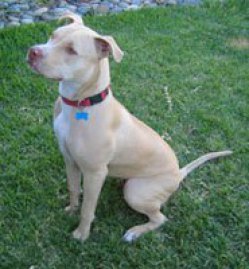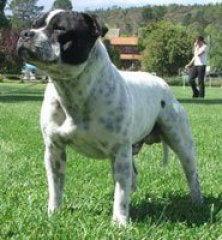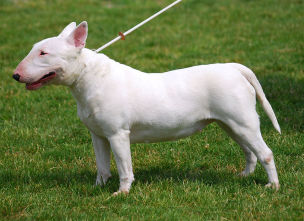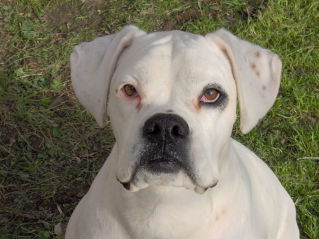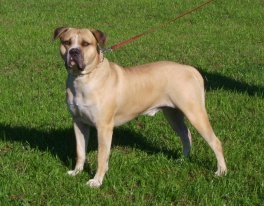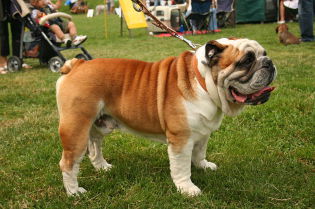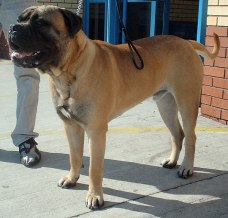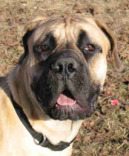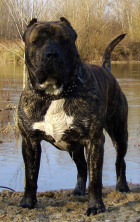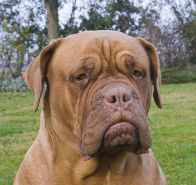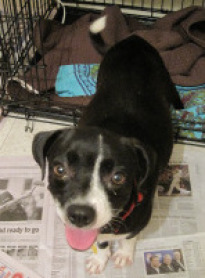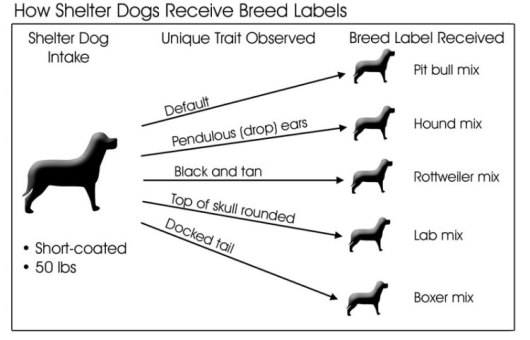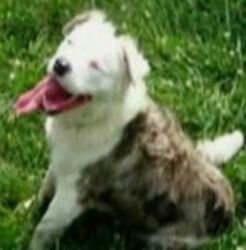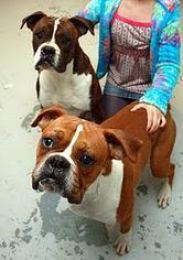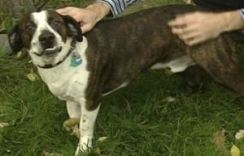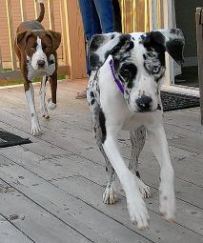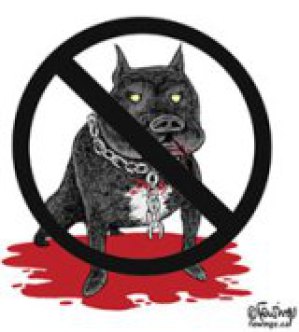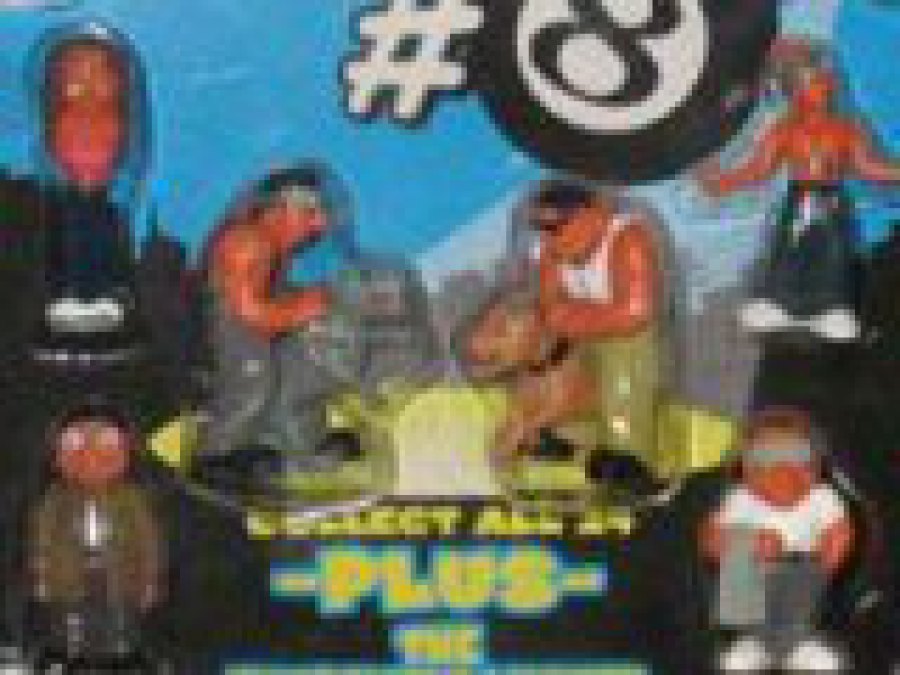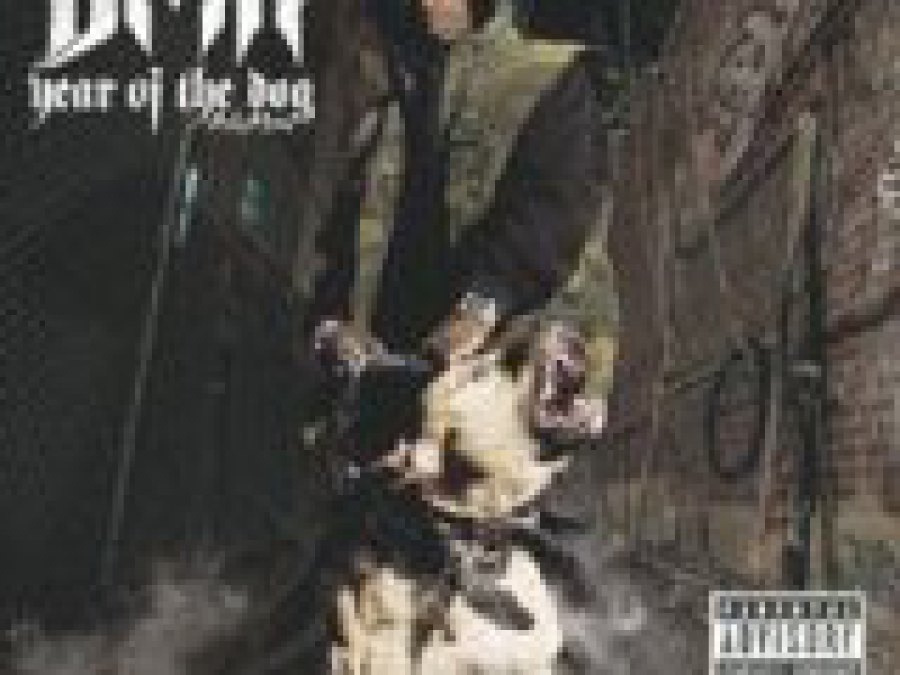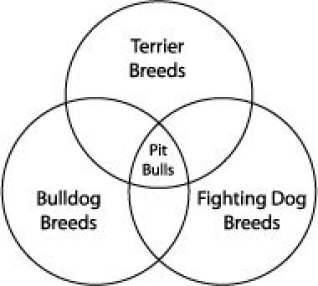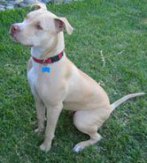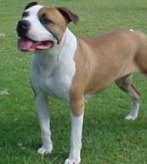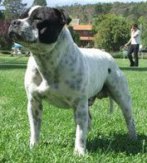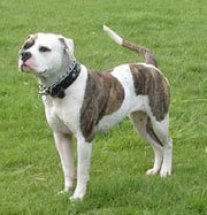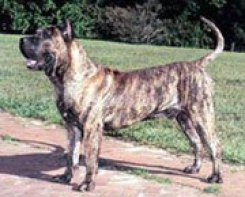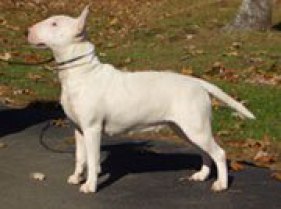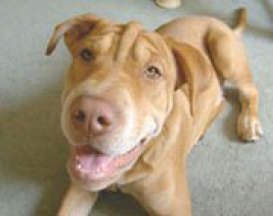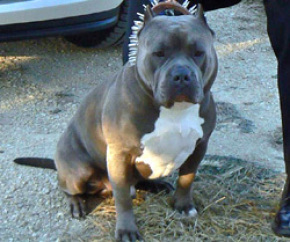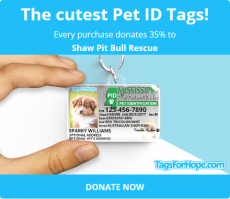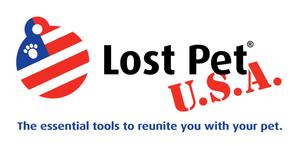10 Types of Pit Bulls
Pitbulls have been disproportionately discriminated against when compared to any other breed in history. Sadly, this has led to countless Pitbulls and Pitty mixes being banned in regions throughout the United States, with many of these dogs turned over to shelters as a result or, in some cases, simply abandoned altogether.
What Is a Pit Bull?
Copied from "Happy Pit Bull"
The term “pit bull” does NOT describe a specific dog breed. A pit bull is a type of dog, just as retrievers, shepherds, and spaniels describe types of dogs.
The term “pit bull” has no single, solid, scientific definition. Your idea of a “pit bull” is a personal and individual idea; no one else’s idea of a pit bull will be exactly the same.
When I was a novice pit bull owner, I thought I knew exactly what “pit bull” means. Times have changed. Not only does our society use pit bull differently today, but my own meaning has changed after a decade of working with “pit bulls.” The term encompasses a large and variable group of dogs. Many if not most of today’s pit bulls are nothing more than mixed-breed dogs with a certain “look” and with unknown and untraceable parentage.
Simply put, a pit bull is whatever any person says it is.
Here you can explore the many different ways that pit bulls are defined and identified today.
Core breeds:
American Pit Bull Terrier and American Staffordshire Terrier
From a historical perspective, the American Pit Bull Terrier and the American Staffordshire Terrier are the breeds at the core of the “original” pit bull. The terms pit bull and pit bull terrier were used in the early 1900s to describe the developing American bull terrier, which later became recognized as the American Pit Bull Terrier via the United Kennel Club and the American Staffordshire Terrier via the American Kennel Club.
Since 1936, these two breeds have been bred to conform to slightly different breed standards. Show dogs like these are bred to meet a physical standard; they are not bred for performance. Show dogs of all breeds are removed from the blood sports (fighting, ratting, baiting) of their past by many generations.
Satellite breeds:
Staffordshire Bull Terrier and Bull Terrier
If we again pursue a historical perspective, the Staffordshire Bull Terrier and (English) Bull Terrier are each slightly removed from the core breeds. In some places with breed-specific legislation, one or both of these breeds are included under the general label “pit bull.”
Like the core breeds, the Staffordshire Bull Terrier is a bull-and-terrier cross. However, the Staffordshire Bull Terrier was developed in the U.K., reached its modern form somewhat earlier than the American breeds, and is a relatively small dog compared to the larger American breeds.
The (English) Bull Terrier is another English bull-and-terrier cross. Early versions of the bull terrier were similar to and contributed to the American Pit Bull Terrier / American Staffordshire Terrier. However, the bull terrier underwent dramatic changes from the 1850s through 1917. Breeder James Hicks mixed this early bull terrier with a variety of breeds, including Dalmatian, Borzoi, Collie, Greyhound, and Foxhound. By 1917, Hicks had produced a dog more like the Bull Terrier we know today, a dog with a very egg-shaped head (lacking a “stop,” a noticeable point where a dog’s nose begins), naturally upright ears, and small triangular eyes. The modern Bull Terrier, with its mixed heritage and changed appearance, is significantly removed from the bull terrier that was once associated with dog fighting.
Similar-Looking Breeds
Several breeds are similar in appearance to the American Pit Bull Terrier. Their mixed-breed offspring can also closely resemble an APBT. In some places with breed-specific legislation, the law may include these breeds under the category of “pit bull.” Many of these breeds can trace some of their ancestry to the now-extinct old-style English bulldog.
Boxer—The Boxer was developed in Germany from the old English bulldog and the Bullenbeisser (German version of the old English bulldog). Both of these were used for hunting and bull baiting in the 18th and 19th century. The Boxer is distinguished from the APBT primarily by its brachycephalic (extremely short or “pug”) nose. Individual dogs and mixes whose muzzles are not so foreshortened are easily seen as pit bulls. Although the Boxer and the pit bull share a strikingly similar history, the Boxer is not commonly legislated against and does not carry the negative stereotype. Although Boxers are usually imagined as brown with a black mask, they are also very common in brindle and white. Their fur is short.
American Bulldog—The American Bulldog is a mashup of old English bulldog, American Pit Bull Terrier, modern (English) Bulldog, Boxer, and possibly even Saint Bernard. American Bulldogs’ traditional coat colors are white, brown, or brindle, in a variety of patterns; the fur is short. American Bulldogs have been developed into three or more distinct strains with slightly different appearances. They are very difficult to distinguish from American Pit Bull Terriers or Boxers. In places with breed-specific legislation, American Bulldogs are often lumped into the “pit bull” category.
(English) Bulldog—The American Pit Bull Terrier and the Bulldog share a common ancestor: the old English bulldog. The modern Bulldog is distinguishable from its cousin by its brachycephalic muzzle, thick facial wrinkles, underbite, and very short legs. These exaggerated features have greatly distanced the modern Bulldog from its more-athletic ancestors; the modern bulldog no longer has the stamina to engage in sporting activities. Although its appearance is quite distinct, the Bulldog and its mixed offspring are nevertheless confused with pit bulls.
Boerboel—The Boerboel is a very large mastiff-type dog from South Africa, used to guard farms and hunt large game. The old English or German bulldog and the Bullmastiff have probably contributed somewhat to it, but much of its development is not well known. The Boerboel’s short fur comes in several colors, but fawn or brown is most common. Many Boerboels have a black mask.
Dogo Argentino—The Dogo, also called the Argentinian Mastiff, comes from Argentina. Its very mixed ancestry includes the old English bulldog, the bull-and-terrier, mastiff, pointer, Boxer, Great Dane, Great Pyrenees, and Irish Wolfhound. Dogos have short white fur, though they may have a few small black or brown spots on the fur or skin. Dogos are very easily confused with the American Pit Bull Terrier. In Argentina, Dogos are used for hunting large game and sometimes for dog fighting.
Cane Corso—This large Italian mastiff was originally used to hunt, to catch livestock, and for assorted other duties (carting, guarding). Its similarity to the old English bulldog has frequently been noted. The Cane Corso’s short fur comes in many colors, including black, brown, brindle, and blue (gray). Brown and fawn dogs often have a black mask.
Presa Canario—The modern Presa Canario is in fact a reconstruction; by the 1970s, the original breed was virtually extinct. Breeds used to recreate the Presa include multiple bulldog types (APBT, American Bulldog, English Bulldog), multiple mastiff types (Neapolitan Mastiff, Bullmastiff, and more), the Doberman, and many other breeds. The Presa’s short fur can be brown or brindle, with a black mask.
Dogue de Bordeaux—This ancient French breed is a large mastiff-bulldog type that was used for hunting and guarding. The Dogue de Bordeaux’s short fur is reddish-brown. Its large size, highly brachycephalic muzzle, and drooping flews make it fairly distinguishable, but the Dogue de Bordeaux can quickly be mixed into offspring that appears “pit bull-like.”
Breed mixes that easily produce “pit bull-like” offspring
Only a small proportion of dogs are purebred. Most dogs are mixed breed dogs. Mixed-breeds can have two to dozens of different breeds in their genetic makeup.
In the case of mixed-breed dogs, appearance and characteristics are basically unpredictable and inconsistent. Two puppies with the same parents may each look and behave strikingly different because they inherit different characteristics.
There are many breeds that, when purebred, have a distinct look—but when mixed, can easily produce offspring that resemble “pit bulls.” Some of these breeds are listed below. (These breeds are in addition to the breeds already mentioned in sections above.)
- Black Mouth Cur
- Catahoula Leopard Dog
- Anatolian Shepherd Dog
- Basenji
- Boston Terrier
- Redbone Coonhound
- Dalmatian
- German Shorthaired Pointer
- Great Dane
- Greyhound
- Labrador Retriever
- (English) Mastiff
- Neapolitan Mastiff
- Plott Hound
- (English) Pointer
- Rhodesian Ridgeback
- Smooth Fox Terrier
- Tosa Inu
- Vizsla
- Weimaraner
- Whippet
Most of the above breeds are medium or large size, have mastiff or terrier roots, have short fur, and have a strong or muscular appearance. These general traits can produce a “pit bull”-looking dog within a first generation mix. A dog does not need any actual DNA from a core or satellite breed (APBT, AST, SBT, BT) in order to have a “pit bull” appearance.
The Shelter Pit Bull
Animal shelters handle a large population of homeless dogs—usually stray dogs with unknown genetic make-up and history—and they must assign a breed label to each dog they take in. Shelters use breed labels for tracking and identification purposes; their clients, who are people seeking their lost dog or looking for a new one, use the breed labels to predict certain traits and thereby narrow their choices. It is not possible to add a dog to a shelter system without marking the dog with at least one “predominant breed.”
Because most dogs do not bring their pedigree (a written family tree) with them when they enter the shelter or animal control system, animal shelter workers assign breed labels upon intake by looking at the dog and guessing its breed or predominant breed. The process of breed labeling is entirely appearance-based and has nothing to do with a dog’s temperament, behavior, or actual DNA.
Furthermore, the individuals who perform the breed labeling often do so without any real education or knowledge about the appearance of the 400+ dog breeds that exist. Shelter workers and animal control officers keep mental “trait templates” of about 30 of the most popular and distinguishable dog breeds (up to maybe 50 breeds if they have more experience). Upon intake, dogs are mentally compared against these trait templates and assigned the closest probable breed. Because the breed labeling process is highly subjective, different shelter workers inevitably notice different prominent traits.
Example. A shelter intake worker labeled this stray 35 lb pregnant female dog a “Pug mix.” All of her puppies were also labeled Pug mixes. A different person saw more Boston Terrier in this dog, and eventually the dogs’ records were changed to Boston Terrier mix. The only basis for these breed labels was the dog’s appearance; two different individuals had two different ideas about which breed this dog looked more like. The person who chose Pug mix did so because the dog was small and had an underbite, which compared favorably to their “trait template” of a Pug. The person who chose Boston Terrier mix did so because the dog was medium-small and had a black-and-white coat, which compared favorably to their “trait template” of a Boston Terrier.
A study done by Dr. Victoria Voith, DVM, et. al. (“Comparison of Adoption Agency Identification and DNA Breed Identification of Dogs,” Journal of Applied Animal Welfare Science, July 2009), compared DNA-based breed identification test results against shelter workers’ visual breed labels. The DNA-based tests did NOT agree with shelter workers’ opinions 87.5% of the time. Visual assessment has proven to be an unreliable method of breed identification. Nevertheless, shelters routinely assign breed labels based on individuals’ personal opinions.
In the shelter system, “pit bull” and “pit bull mix” are used as generic categories into which dogs are placed if they 1) have reasonably short fur and a somewhat wide head; and 2) do not possess any traits that might assign them to a more distinct breed. The “pit bull mix” category is a default category into which many generic-looking dogs are placed, regardless of their actual DNA make-up or history.
The Media Pit Bull
Finally, we reach the most broad of the possible definitions of “pit bull,” wherein a dog may be considered a pit bull regardless of its genetic heritage or visual appearance. This pit bull is circularly defined as “a dog that ‘looks like’ a pit bull.”
We call this the “media pit bull” because of the news media’s tendency to over-identify any troublemaking dog as a pit bull. However, this vague, almost undefinable “pit bull” is not the exclusive consequence of bad reporting. Dog owners, lawmakers, public officials, and even the general public are prone to apply the “pit bull” label to all kinds of dogs based on a “pit bull look” that has itself proven impossible to pin down.
Whereas we previously said that a very basic description of “pit bull” might include short fur, a wide head, and medium size, media pit bulls do not necessarily have those characteristics either.
Harley and Belle appear to have Great Dane traits, but their owner called them “pit bull mixes” on her Facebook page. City officials said that was sufficient evidence to consider them “pit bulls.”
(Wentzville, MO, Nov 2011)
When you see these very different dogs being called pit bulls, you probably start to wonder: exactly what physical characteristics make a dog “look like” a pit bull?
To be able to define “pit bull” as a specific and visually distinct type of dog, there must be some physical characteristic that all of these dogs share, that other types of dogs do not have. As we have seen from the discussion thus far, however, “pit bulls” may come in all shapes, sizes, colors, and coat lengths. Often, a dog is identified as a pit bull not because of its DNA but because of an unquantifiable and indefinable “pit bull look.”
Ontario Attorney General Michael Bryant sums up this imprecise and rather circular definition of a pit bull:
“If it walks like a pit bull, if it barks and bites like a pit bull, wags its
tail like a pit bull, it’s a pit bull.”
The Pit Bull in Popular Culture
Until now, we have been talking about what a “pit bull” might look like, because pit bulls are typically identified through a visual assessment of physical characteristics.
The term “pit bull” becomes far more complex, however, when we approach the term from a sociological perspective. What do people mean when they use the term pit bull? What images and ideas are socially attached to this term? What kinds of stereotypes and generalizations are inextricably linked with it?
Stereotype and myth are frequently invoked to describe the “pit bull” of popular culture.
Pit Bulls are Vicious Dogs
The stereotypical or popular image of the pit bull is very different from the technical definition. The stereotypical pit bull is a human-aggressive, bloodthirsty, child-killing machine. It is impervious to pain, has locking jaws, and has incredible strength. It is highly unpredictable, unstable, and uncontrollable.
Pit bulls are sometimes compared to sharks, tigers, venomous snakes, and other wild animals. There are a wide variety of myths associated with the stereotypical pit bull.
Some examples of individuals invoking the image of the stereotypical pit bull:
|
“They are a land shark. They are a walking time bomb…If something sets [a pit bull] off, it can kill. It wants to kill.” — Oklahoma Rep. Paul Wesselhoft, Enid News, 7/28/05
|
|
“Repeat after me: ‘This breed is unpredictable…prone to attack for no reason’.” – Anonymous poster, discussing a July 12, 2007 Greely Tribune article entitled “Pit bull chases puppy into house“
|
|
“…the pit bull is an exceptionally strong and athletic dog which requires extraordinary measures for confinement (e.g., six-foot-high enclosed fences). Pit bulls… have been known to destroy sheetmetal panels by ripping them apart with their teeth.” (Singer v. Cinncinnati, 1990, qtd in State of Ohio v. Anderson, 1991)
|
|
“This is not a normal canine animal.” – Parker, CO Councilman Jack Hilbert, Rocky Mountain News, 1/5/06
|
|
“[Pit bulls’] massive skulls and powerful jaws give them almost super-canine biting power.” Brian C. Anderson, “Scared of Pit Bulls? You’d Better Be!,”
|
Popular images of pit bulls often pair this type of dog with a similarly frightening owner. Owners are typically characterized as drug dealers, gang members, or dangerous criminals. They are often described as uneducated, poor, “trailer trash.” There is an element of racism that cannot be overlooked. In short, pit bull owners are as undesirable in a community as the pit bulls themselves.
Some examples of individuals invoking the image of the stereotypical pit bull owner:
| “I can’t help but believe part of the allure of owning a pit bull is the danger. If it’s not, then why bother?” — Harry Smith, CBS Early Show co-anchor, 1/9/06 |
| “We don’t want ‘those people’ here.” – Aurora City Councilmember Bob Fitzgerald, explaining the need for a ban on pit bulls |
| “…those who go to shelters seeking out breeds like Pit Bulls have an agenda that goes beyond just having a family pet. They are looking for something that is linked to violence, something that is intimidating…” – Waterton, NY, Mayor Jeff Graham |
| “Just a casual observation. About 98 percent of pit bull owners are certified ‘White Trash'” – poster Tex06, Lone Star Times blog, 7/2/07 |
| “Try to get homeowners’ insurance with a pit bull (unless of course you lie about it, which would be about par for a pit bull owner). I doubt if a lot of pit bull owners can even afford a mortgage, though.” – poster dezzzi on a Courier Press message board, 1/12/07 |
For some antisocial individuals, it is actually desirable to own a vicious dog. Individuals with low self esteem, who feel bullied or oppressed, or who crave attention, typically feed off of the intimidation and fear that an image of a stereotypical pit bull can stir up among the general populace. For this reason, the stereotypical pit bull can be a self-fulfilling prophecy, as those who are inclined to own a vicious dog are likely to do whatever they can to incite their dog to behave inappropriately.
Thus, people who “innocently” repeat and reinforce the stereotype, including those who repeat unsubstantiated rumors, and those who pass off mythology as fact, are partially responsible for the existence of vicious pit bulls. If the pit bull did not have such a strong stereotype, making it the “breed of choice” for irresponsible, dangerous owners, society would likely see a decrease not only in pit bull-related bites (and over-coverage in the media), but also in the number of criminals, thugs, and others who believe that a pit bull is the type of dog that will scare people, and consequently raise and train a pit bull to… what else? scare people.
Technical Definition
Literally, the term pit bull terrier (from which comes the shortened term pit bull) can be broken down into three components: pit, bull, and terrier. Pit acknowledges the dog’s history as a fighting dog (because dogs fight in “pits”) while bull highlights the dog’s bulldog ancestry and terrier describes the dog’s terrier ancestry (see the graph and history section above). It is important to note that not every fighting dog is a Bull-and-Terrier, and not every Bull-and-Terrier is a fighting dog. The three elements (Bulldog, Terrier, fighting dog) come together only in the pit bull type dog.
“Pit bull” does not include all bully breeds or all fighting dogs. Akitas are a fighting breed, but they are not a bully breed, so they are not pit bulls. Bull Terriers are Bull-and-Terrier type dogs, but they were never used consistently for dog fighting, so they are not pit bulls. The Dogue de Bourdeux might be considered both a Bulldog breed and a fighting breed, but the Dogue de Bourdeux has Mastiff, not Terrier, in its ancestry.
Thus, in a technical sense, “pit bull” refers to a dog whose ancestors were Bull-and-Terrier type dogs once used for dog fighting. The specific breeds included in this technical definition are: American Pit Bull Terrier, American Staffordshire Terrier, and Staffordshire Bull Terrier. On this website, I use the technical definition of “pit bull,” with some exceptions as noted.
The three technical pit bull breeds
In the United States, the American Kennel Club (AKC) registers American Staffordshire Terriers and Staffordshire Bull Terriers. The United Kennel Club registers American Pit Bull Terriers and Staffordshire Bull Terriers. Their breed standards can be accessed at the following links:
UKC American Pit Bull Terrier
AKC American Staffordshire Terrier
AKC Staffordshire Bull Terrier
UKC Staffordshire Bull Terrier
The American Staffordshire Terrier and American Pit Bull Terrier have very similar appearances, to the point that some APBTs are actually dual-registered as ASTs. APBTs and ASTs should be no more than 65 lbs at a healthy weight. The Staffordshire Bull Terrier is a smaller dog and should weigh between 28 and 48 lbs. In all cases, the dog’s overall body shape should be proportional and fairly streamlined; no part of the body should look “oversized.”
Pit bull temperament
A dog’s breed or type is not solely defined by its appearance; temperament must also be considered. The pit bull’s proper temperament is usually described as one of confidence, determination, courage, and tolerance.
Pit bulls were historically bred for dog-aggression, not human-aggression. Before a fight, dog handlers washed each other’s dogs. In the heat of a dog fight, handlers had to be very close to their dogs, sometimes with their face just inches from their dog’s face. Dogs that redirected their aggression toward people were culled (killed), with very few exceptions. Overall, this should have created a breed-type with a very stable temperament.
This is reflected in the breed standards’ descriptions of proper temperament. It is important to note that none of the breed standards allow for viciousness or human-aggression. Dog-aggression is acceptable to some extent but the dog should never be unmanageable.
Legal Definition
Breed-specific legislation (BSL) requires that all dogs be classified as a particular breed or type of dog. BSL almost always includes “pit bulls” as a specific target of the legislation. Because the term pit bull does not mean the same thing to everyone, a legal definition of pit bull is usually necessary in order to clarify exactly which dogs are affected by the legislation. Additionally, court cases revolving around BSL typically hinge on whether the definition of pit bull is too vague or incorrect.
Who creates this definition?
Breed-specific legislation, and thus the legal definition of pit bull, is created by lawmakers (state legislators, city councilmembers, and so forth), sometimes with input from other sources (animal control, citizens, laws written by other legislators, etc.) and sometimes based solely on the lawmakers’ own concepts of what a “pit bull” is. For this reason, the legal definition of pit bull can differ significantly from the technical definition.
Here are some examples of differing legal definitions of the term pit bull:
Denver City Code, Sec. 8-55.b.2: “A ‘pit bull,’ for purposes of this chapter, is defined as any dog that is an American Pit Bull Terrier, American Staffordshire Terrier, Staffordshire Bull Terrier, or any dog displaying the majority of physical traits of anyone (1) or more of the above breeds, or any dog exhibiting those distinguishing characteristics which substantially conform to the standards established by the American Kennel Club or United Kennel Club for any of the above breeds…”
Denver’s city code is the most commonly imitated legal definition. Although Denver uses breed standards to identify pit bulls, they focus entirely on physical characteristics and conveniently ignore the temperament characteristics mentioned in the breed standards.
Ontario, Canada Dog Owner’s Liability Act:
“‘pit bull’ includes: (a) a pit bull terrier, (b) a Staffordshire bull terrier, (c) an American Staffordshire terrier (d) an American pit bull terrier, (e) a dog that has an appearance and physical characteristics that are substantially similar to those of dogs referred to in any of clauses (a) to (d); (“pit-bull”) “
Ontario Attorney General Michael Bryant offers this definition to the Ontario legislature:
“I’ve said before and I will say again, if it walks like a pit bull, if it barks and bites like a pit bull, wags its tail like a pit bull, it’s a pit bull.” (Ontario Hansard 38-1, November 4, 2004)
In a 2007 court decision about the Act (Cochrane v. Ontario), the Judge noted: “…by providing that ‘pit bull includes’ and by designating ‘pit bull terriers’, the definition captures dogs beyond these three breeds and beyond those that are substantially similar in appearance and physical characteristics to these three breeds.”
Alburnett, Iowa, City Code 17.2:
A dangerous dog is defined as: “Pit bulls, including the following:
1. The Bull Terrier breed of dog,
2. The Staffordshire Bull Terrier breed,
3. The American Staffordshire Terrier breed,
4. The American Pit Bull Terrier breed,
5. Dogs of mixed breed or other breeds which are know [sic] as pit bulls, pit bulldogs or pit bull terriers,
6. Any dog which has the appearance and characteristics of being predominately of the breeds of Bull Terrier, Staffordshire Bull terrier, American Pit Bull Terrier, American Staffordshire Terrier, and other breed commonly know [sic] as pit bulls, pit bull dogs or pit bull terriers or a combination of any of these breeds.”
This city code includes Bull Terriers, a dog which is not technically a pit bull and, I would add, not commonly known as a pit bull except by the sadly misinformed.
New Jersey bill S801 proposed by Senator Sharpe James in 2007 (did not pass):
“‘Pit bull’ means any dog of the breed American Pit Bull Terrier, American Staffordshire Terrier, Staffordshire Bull Terrier, or Staffordshire Terrier, or any dog determined to be a pit bull type dog pursuant to subsection c. of section 3 of this act… A municipality adopting an ordinance pursuant to subsection a. of this section may require the license applicant to provide: (1) information about the breed, sex, age, color and markings of the dog and whether it is of a long- or short-haired variety…”
Senator James apparently was unaware that 1) there is no such breed as “Staffordshire Terrier,” and 2) unlike some breeds (i.e. Daschunds and Chihuahuas), pit bulls simply do not come in a “long-haired variety.”
“‘Vicious dog’ means a dog that, without provocation and subject to division (A)(4)(b) of this section, meets any of the following:…Belongs to a breed that is commonly known as a pit bull dog. The ownership, keeping, or harboring of such a breed of dog shall be prima-facie evidence of the ownership, keeping, or harboring of a vicious dog.”
The state of Ohio does not even bother to define “pit bull dog,” assuming that any breed “commonly known as a pit bull”—is a pit bull. But commonly known by whom? Perhaps this is why the Toledo Municipal Court has subsequently ruled that Presa Canarios and American Bulldogs are “commonly known as pit bulls.”Without any criteria to define “pit bulls,” this suggests that almost any dog could be considered a pit bull.
State of Ohio v Anderson (1991):
The court described “pit bulls” as possessing the following physical characteristics: short, squatty body with developed chest, shoulders and legs; large flat head; muscular neck and protruding jaw; appearance that typifies strength and athleticism; muscular bull-type dog; short haired; good width and length of jaw; massive canine jaws which can crush a victim with up to 2,000 pounds of pressure per square inch.
The court also established the following behavioral characteristics: grasping strength; climbing and hanging ability; weight pulling ability; a history of frenzy, which is the trait of unusual relentless ferocity or extreme concentration on fighting and attacking; a history of catching, fighting and killing instinct; the ability to be extremely destructive and aggressive; high tolerance to pain; great biting strength; underlying tenacity and courage.
This definition turns a pit bull into a gross caricature, a Hollywood movie monster. There is not a dog alive that fits this description, which is based primarily on sensationalism and mythology, not scientific data. The fact that the court accepted the “2000 lb psi bite strength” myth as a fact, despite scientific evidence proving that no dog is capable of such strength, makes their entire definition suspect. The use of the emotionally-charged, dramatic words like “massive,” “frenzy,” and “ferocity” further undermine their definition.
Some places with BSL use “pit bull checklists” to determine whether a particular dog is a pit bull. The checklist items are entirely subjective and it’s concievable that just about any dog could be deemed “pit bull” when the checklist is applied.
| San Francisco, CA Pit Bull Checklist The City and County of San Francisco, Department of Animal Care and Control considers a dog to be predominantly a pit bull breed (American Staffordshire Terrier, American Pit Bull Terrier, or Staffordshire Bull Terrier) if the dog possesses 5 out of the following 8 characteristics: |
- Head is medium length, with a broad skull and very pronounced cheek muscles, a wide, deep muzzle, a well-defined, moderately deep stop, and strong under jaw. Viewed from the front, the head is shaped like a broad, blunt wedge.
- Eyes are round to almond shaped, are low in the skull and set far apart.
[Author note: I wonder what type of dog does not have “round to almond shaped” eyes? Are not eyeballs, by their very nature, “round”?] - Ears are set high. Un-cropped ears are short and usually held rose or half prick, though some hold them at full prick.
- Neck is heavy and muscular, attached to strong, muscular shoulders.
- Body is muscular, with a deep, broad chest, a wide front, deep brisket, well-sprung ribs, and slightly tucked loins.
- Tail is medium length and set low, thick at the base, tapering to a point.
- Hindquarters are well muscled, with hocks set low on the legs.
- Coat is a single coat, smooth, short and close to the skin
I could see a Labrador Retriever meeting most of these criteria. And, if I were creative and/or determined enough, a Chihuahua. This description depends on subjective criteria, meaning it could be unequally applied.
One of the major difficulties with the legal definition is that every dog’s breed or mix must be identified. Most dogs do not come with a pedigree, and current DNA-based breed-id tests are expensive and not very accurate. Thus, dogs are judged on appearance alone.
Defining a “pit bull” based on appearance alone is clearly problematic due to its subjectivity. Many breeds and types of dogs “display the majority of physical traits” of a pit bull but are not technically pit bulls. Some animal control officials have admitted that, by using appearance as the sole determinant of a dog’s breed, a single litter of puppies may contain both “pit bulls” and “non-pit bulls.” Dog warden Tom Skeldon, the driving force behind Ohio’s BSL, testified before the court in Toledo v. Tellings (2006) that “even if a dog was 50 per cent pit bull, if it did not ‘look like a pit bull,’ the owner would not be charged. On the other hand, if a dog did ‘look like a pit bull,’ it would be classified as a pit bull and the owner would be subject to the ‘vicious dog’ laws.”
In summary, here are some photos of dogs that might be legally considered “pit bulls” (due to appearance or breed), but are not technically “pit bulls.”
Presa Canario
Presa Canarios originated in the Canary Islands as farm dogs. Their only relation to pit bulls may stem from crossbreeding with Old English Bulldogs (the ancestor of many bully breeds) in the 18th
century. Despite this, the Toledo Municipal Court seems to feel that Presas are “commonly known as a pit bull.” Commonly known by whom, I wonder?
Bull Terrier (or English Bull Terrier)
The Bull Terrier is a bulldog-and-terrier cross but is not a fighting breed, regardless of how some misinformed individuals portray it. Bull Terriers are not “pit bulls,” but the confusion doubtless
arises because of the similarity between the name “Bull Terrier” and the term “pit bull terrier.”
Mixed breed dog
This dog may be a pit bull mix, but how can it be proven in a scientific manner? Mixed breeds come in all sizes, shapes, colors, and body styles; it may be very difficult to determine whether a mixed
breed dog has any pit bull in it, especially when the owner has no knowledge of the dog’s parentage (i.e. an adopted or rescued dog).
Fad Breeders
Note: Because I do not want to provide free publicity to breeders—especially fad breeders—my source citations in this section will be rather vague. My apologies.
A “fad” breeder is generally defined as a person who breeds dogs to make money. Fad breeders surf the waves of popular demand and try to supply consumers with the latest “craze” in dog ownership. But fad breeders do more than just produce an overpopulation of a particular breed. To turn a profit quickly, fad breeders must disregard breed standard, health and temperament testing, and all other costly and time consuming measures that responsible breeders undertake to produce quality representatives of the breed.
Because fad breeders do not spend the time and effort to create a quality dog (one that meets breed standard and does not have health or temperament issues), and because they want a quick sale, fad breeders must market their substandard dogs in a way that makes the dogs seem better, more desirable, more unique, or “cooler” than properly-bred dogs. With pit bulls, fad breeders have redefined what “pit bull” means, and what traits are desirable in a “pit bull,” in order to meet the market’s demand for “badass” dogs.
Fad breeders often define and describe “pit bulls” closer to the stereotype than the true breed standard.
This dog, according to a fad breeder, is a “pit bull.” Compare it side-by-side with an American Pit Bull Terrier that meets breed standard. You will notice that, compared to a pit bull of correct conformation, this dog’s:
- chest is too wide
- head is too massive / cheeks too pronounced
- jowls are too loose and hang down too far
- legs are too short and bowed
- muzzle is too short (leaning toward bracycephalic)
- overall size is excessive
How can this dog, which is nothing like what a pit bull technically should look like, still be considered a “pit bull”? Yet, this particular “supersized pit bull” is usually the image that comes to the mind of people who use the stereotypical definition of pit bull. (Notice how this dog somewhat resembles the pit bull drawn by the political cartoonist, above.)
The following is an ad that a fad breeder runs in Dog Fancy Magazine:
- Extreme large bone/head
- Wide chest/hips
- Powerful drive…
- Males 90-130 lbs
- Females 65-105 lbs
Not a single one of these traits is desirable per breed standard for any of the pit bull breeds. The weight range alone is far outside appropriate weight for a true pit bull breed; calling these dogs “pit bulls” is like calling a 10 lb dog a Chihuahua. No matter how you look at it, Chihuahuas don’t weigh 10 lbs. And pit bulls should not top 65 lbs, much less hit the triple digits!
Another ad in Dog Fancy:
‘Size Does Matter’
Head, Shoulders and Chest above the Rest.
- Massive bone structure with large head and baseball cheek.
- Wide chest.
- Excellent temperament.
Females: 70-90 lbs.
Males: 90-100+ lbs.
Producing mid-size dogs with hard, rock-chiseled bodies.
Again, my objections to size as noted previously. These are not “mid-size dogs”; they are very large dogs—too large to be pit bulls in the technical sense. Further, “baseball cheek” is not a term I’m familiar with, but I’d assume the breeder is trying to stress the width of the dog’s head and the extreme protuberance of its jaw muscles. Again, this is not what a real pit bull should look like. This is a caricature of a “musclebound” type of dog. In fact, this image is rhetorically reinforced by the use of the phrase “hard, rock-chiseled bodies.” I picture a bodybuilder or weightlifter flexing his abs or crushing a soda can with his pectorals.
Fad breeders of pit bulls will also emphasize guarding or protection abilities—never mind the prohibition against “viciousness” or human-aggression put forth by breed standards for pit bull breeds.
Indeed, it seems that fad breeders are capitalizing on some individuals’ desire to be “bigger, better, and badder” than everyone else; thus, they portray the “pit bull” as the “bigger, better, and badder” accessory. Fad breeders market “pit bulls” as bulky, musclebound, powerful beasts that can be used for protection—or perhaps just to intimidate other people. This is a far cry from the technical definition of the pit bull that I put forth above, but not too far from stereotypical imagery.
Fad breeders are a major reason why the stereotype outshouts the technical definition of “pit bull.”
Dog Fighters
| “Countless centuries have been involved in developing the American Pit Bull Terrier into a fighting machine beyond comparison…. These dogs are downright ‘bullet proof’!” —Richard Stratton, This is the American Pit Bull Terrier, 1976 |
| “…the owner of one of the fighting breeds can enjoy the distinction of having—beyond a shadow of a doubt—the toughest dog on the block!” —Carl Semencic, The World of Fighting Dogs, 1984 |
| “Not only does the Pit Bull love to fight, but he’s very, very good at it and has unbelievable courage…. They also have a high threshold of pain… They are also very hard to kill…. Also, I have read somewhere—I don’t know how reliable the source—that a Pit Bull has more than double the biting power of a German Shepherd, so when they do get vicious they can do more damage.” —Bob Stevens, Dogs of Velvet and Steel, 1983 |
| “…you can have one that peaks at only thirty pounds and still have a delightful animal that is all dog and, most assuredly, no sissy!… Two different people… have sent me pictures of Bulldogs doing battle with a wolverine—and whipping him! If the wolverine doesn’t impress you, how about a lion?”—Richard Stratton, The Truth About the American Pit Bull Terrier, 1991 |
[Ed note: Naturally, the authors cited above claim that they are not involved in dog fighting. For obvious reasons, you won’t find a lot of texts written by acknowledged dog fighters. However, the above authors—and many others—are very familiar with dog fighters and the dog fighting culture; they are the most accessible writers with texts in which dog fighters’ voices may be heard; and they offer, and may even praise, the dog fighter’s perspective. In this sense, their definition of “pit bull” is synonymous with the definition put forth by dog fighters.]
Since the activity began centuries ago, dog fighters have been talking tough about pit bulls. Without exception, dog fighters frame pit bulls as the ultimate “fighting machine.” Machines, of course, lack the frailties, imperfections, and emotions that an animal possesses. Machines must be commanded to start and stop. In this way, the dog fighter de-humanizes (de-canine-izes?) the pit bull. The pit bull feels no pain, participates willingly, will not quit, and is unbeatably strong. The fighting dog has no flaws.
Why do dog fighters work so hard to build up the idea that pit bulls are the toughest, strongest dogs around? Why is it critical that pit bulls be presented as unbeatable and indomitable? One gets a sense, from reading the texts written by dog fighters, that the pit bull’s status is tightly linked to the dog fighter’s self-esteem. By owning an unbeatable dog, the owner feels superior to his peers.
| Dog Fighters’ Assertions | Analysis of Assertions |
| Pit bulls enjoy fighting and are willing participants in dog fights. | This idea is used to support dog fighters’ belief that pit fighting isn’t cruel, or if it is, it is just as “cruel” as two humans fighting in a ring.Unlike human fighters, pit bulls do not voluntarily sign up for fights—their owners make that decision.Furthermore, one could argue that a fight to the death does not make the fight “enjoyable” to the participants; but it does make each dog desperate and determined to win, no matter what. Those “wagging tails” in the pit are not signs of joy; they are common indicators of stress and aggression. The “eagerness” with which a dog strains to get at another dog before the match has started is not due to a desire to “start the fun”; it is an eagerness to get the first bite, and have a chance to survive. |
| Pound for pound, pit bulls are stronger than any other type of dog. | There has never been any scientific evidence to prove this. Pit bulls do well in activities like weight pull, but so do many other types of dogs.This is one of many baseless claims made by dog fighters to build up the reputation of the pit bull as a super-tough dog. |
| Pit bulls do not feel pain, or are extremely tolerant of pain. | There is no scientific evidence to support this. I personally know many pit bulls who are total wusses when it comes to pain.In addition to using this as a means of casting the pit bull in the “super dog” frame, fighters also use this idea to justify the abusive practice of dog fighting. After all, if it doesn’t hurt the dog, how can it be cruel? |
In most texts written by dog fighters, there is a very stereotypically masculine-oriented tone. Richard Stratton, in particular, uses the word “man” almost exclusively when talking about dog fighters, and apparently assumes most of his readers are men (men who are amused by dog fighting). Further, many writers about pit dogs inevitably strive to “impress” (as Stratton says) their readers by spouting out story after story of dogs fighting each other, dogs fighting wild animals, and, occasionally, dogs acting aggressively toward people. These stories are written with overt admiration and amusement.
Because–in the dog fighter’s mind–the only “real” dog is a supreme gladiator, it is natural that the dog fighter’s definition of a pit bull revolves around the portrayal of the pit bull as an unbeatable fighting machine. Consequently, the dog fighter’s definition of a pit bull is more of a stereotype than a reality.
It should be noted that the dog fighter’s definition is also the definition from which many legal and social definitions sprout. BSL is passed, in part, because politicians and citizens buy into the dog fighter’s emphasis that pit bulls are unstoppable (i.e. “bulletproof,” “hard to kill,” “can do more damage”) and unbeatable. Courts have also cited dog fighters’ exaggerated descriptions of the pit bull as evidence that the dogs are dangerous (see, for example, State of Ohio v. Anderson, 1991). This, of course, only legitimizes the dog fighter’s stereotype, thereby encouraging dog fighters—and others who wish to own “the toughest dog on the block”—to go out and get a pit bull not as a pet, but as a status symbol.
Pit Bull Owners
Considering the vast array of definitions of pit bull we have discussed so far, it is no wonder that the definition of pit bull is not at all consistent among pit bull owners themselves. Furthermore, any owner’s definition may evolve over time based on their experiences and acquired knowledge about the breed-type.
Type 1—Tough dog
Novice owners’ early definition of pit bull typically parallels popular imagery or the dog fighters’ stereotype. This is due to these images’ immediacy and prevalence, as well as the novice owner’s limited experience and knowledge.
Many first-time pit bull owners are easily able to obtain Richard Stratton’s books, wherein the pit bull is described as a tough fighting machine. Jacqueline O’Neal’s or Diane Jessup’s books, wherein the pit bull is greatly normalized and the author puts forward a strong image of pit bulls-as-pets, can be more difficult to find.
Furthermore, novice owners tend to receive a great deal of feedback from inexperienced friends and family members who define pit bulls via media horror stories and popular imagery.
For those owners who aquired their pit bull as a status symbol and intimidation device, this definition may be quite agreeable. Therefore, they may never revise the definition past this point.
Thus, owners may define pit bulls as
- Very tough dogs
- Unbeatable dogs
- Aggressive dogs
- Dogs with a fighting nature
- “Badass” dogs
- Potentially dangerous dogs
- Backyard dogs, guard dogs, money-making dogs—not pets or family members
Type 2—Perfect angel
Owners who are uncomfortable with the Type 1 definition, and who see an extreme disjoint between this and the definition that their own pit bull—usually a puppy—seems to be offering (friendly, gentle, sweet, funny, playful, etc.) will totally reject the former definition. They redefine the pit bull as a total angel, incapable of doing wrong. Common quotes by pit bull owners who use the Type 2 definition include: “He wouldn’t hurt a fly,” “My dog is the sweetest dog ever,” “Not an aggressive bone in his body,” “I trust him completely with my kids,” “Perfect in every way,” and so on.
Many owners therefore see pit bulls as
- Sweet, loving, friendly dogs
- Dogs that must be taught or trained to be mean
- Dogs that would not hurt a flea
- Human-like entities, capable of highly rational thought and deep emotions
- Super-dogs possessing abilities that outpace those of any other type of dog
Note: This sort of attitude is definitely not limited to pit bull owners; this can apply to an owner of any breed of dog.
Type 3—Normal dog
More experienced and educated owners, having been exposed to a wider variety of material and points of view, generally reject both Type 1 and Type 2 definitions in favor of a more moderate definition. They see the pit bull as a normal dog, with typical canine needs, flaws, and abilities. Responsibilities and requirements for ownership are the same as with any other type of dog. It is generally understood that the pit bull is neither an innocent angel nor a vicious beast; the pit bull is a dog and will behave like a dog.
These owners define the pit bull as
- A dog, possessing the good and bad qualities of a dog
- A companion and a family member—definitively canine, but nevertheless a beloved pet
- A living creature with behaviors stemming from both genetic and environmental factors
- A dog that can do everything other dogs can do—no more or less

